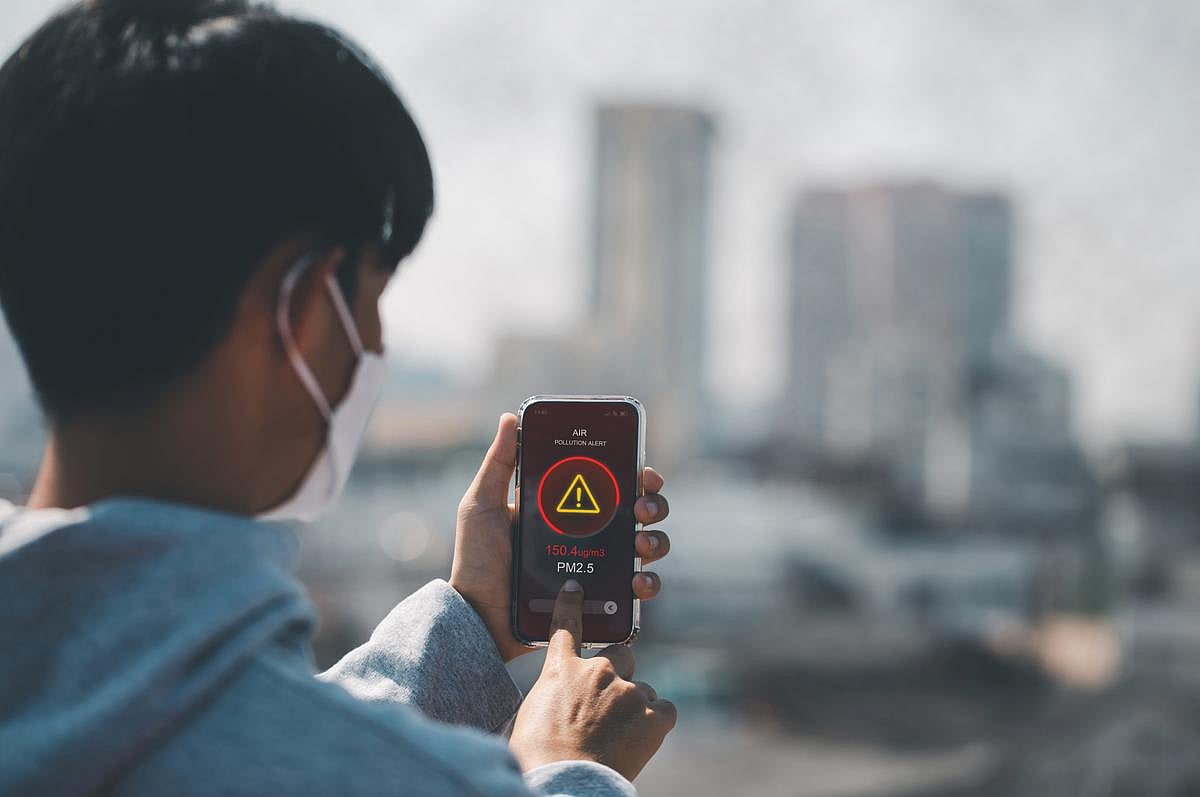Get Healthy!
Staying informed is also a great way to stay healthy. Keep up-to-date with all the latest health news here.
21 Jan
Mixing Up Your Exercise Routine May Help You Live Longer
A new study finds engaging in a wide range of physical activities may lower your risk of death more than doing the same thing over and over again.
20 Jan
Why Parents Are Easing Up on Kids’ Swearing
A new national poll finds only about half of parents now say kids should never swear, and more than a third say it depends on the situation.
19 Jan
Major Evidence Review Finds No Link Between Tylenol During Pregnancy and Autism or ADHD
A review of 43 high-quality studies involving hundreds of thousands of children finds no evidence that taking acetaminophen during pregnancy increases a child’s risk for autism, ADHD or intellectual disability.
Why Your Brain Drifts After a Bad Night’s Sleep, Scientists Explain
Ever notice how hard it is to stay sharp after a rough night of sleep?
A recent study published in the journal Nature Neuroscience points to a surprising reason why: The brain may briefly shift into a sleep-like cleaning mode, even while you’re awake.
Researchers at the Massachusetts Institute of Technology (MIT)...
- I. Edwards HealthDay Reporter
- |
- January 21, 2026
- |
- Full Page
Your Nose May Decide How Bad Your Cold Gets, Study Finds
WEDNESDAY, Jan. 21, 2026 (HealthDay News) — Why does a cold virus knock some people flat while others barely feel it?
A new study suggests the answer may come down to what happens inside your snoot.
Researchers found that how cells in the nasal passages respond to rhinovirus, the most common cause of a cold, helps decide ...
- I. Edwards HealthDay Reporter
- |
- January 21, 2026
- |
- Full Page
Wildfire Smoke During Pregnancy May Raise Autism Risk, Study Finds
Women who breathe wildfire smoke during pregnancy, especially in late stages, may put their offspring at greater risk of autism, a new study of California births suggests.
Researchers found that exposure during the third trimester, when the fetus’ brain grows rapidly, was linked to a higher chance of an autism diagnosis in childhood....
- I. Edwards HealthDay Reporter
- |
- January 21, 2026
- |
- Full Page
Measles Outbreak Reaches Clemson Campus as South Carolina Cases Surge
South Carolina’s fast-growing measles outbreak has now reached a major college campus, after health officials confirmed a case linked to Clemson University.
State health officials said a person affiliated with the university tested positive for the highly contagious virus, raising fears as the outbreak continues to spread across the ...
- I. Edwards HealthDay Reporter
- |
- January 21, 2026
- |
- Full Page
'Super Agers' Have Genetic Edge For Brain Health, Study Suggests
So-called “super agers” have a couple of genetic advantages that help them maintain their brain health into late old age, a new study says.
These folks are less likely to harbor the gene variant most associated with late-onset Alzheimer’s disease, the APOE-ε4 gene, researchers reported Jan. 16 in the journal A...
- Dennis Thompson HealthDay Reporter
- |
- January 21, 2026
- |
- Full Page
Air Pollution Increases Risk Of ALS
Prolonged exposure to air pollution appears to increase a person’s risk of ALS and other motor neuron diseases, a new study says.
Further, air pollution also appears to speed up the disease in people diagnosed with ALS, researchers reported Jan. 20 in JAMA Neurology.
“Our results suggest that air pollution might ...
- Dennis Thompson HealthDay Reporter
- |
- January 21, 2026
- |
- Full Page
AI Could Make At-Home Balance Exercises More Effective
AI might be able to help people undergoing balance training as part of their physical rehabilitation, a new study says.
Patients wearing just four sensors — on each thigh, the lower back and upper back — can get accurate real-time, AI-driven feedback on balance exercises they’re performing at home, researchers recently re...
- Dennis Thompson HealthDay Reporter
- |
- January 21, 2026
- |
- Full Page
Ozempic Improves Knee Replacement Outcomes Among People With Type 2 Diabetes
Even a brief round of Ozempic can help people with type 2 diabetes have a more successful knee replacement surgery, a new study says.
Patients given Ozempic just a few months prior to their knee replacement surgery had fewer complications after the procedure, researchers recently reported in The Journal of Arthroplasty.
"Our...
- Dennis Thompson HealthDay Reporter
- |
- January 21, 2026
- |
- Full Page
Alcohol Tied To Suicide Risk Among Lesbian, Bisexual Women
Drinking is linked to suicide among lesbian, gay and bisexual women, a new study says.
LGB women had a 38% higher likelihood of alcohol being involved in their death by suicide compared to heterosexual women, researchers reported Jan. 20 in JAMA Network Open.
They also were more likely to be intoxicated at the time of their ...
- Dennis Thompson HealthDay Reporter
- |
- January 21, 2026
- |
- Full Page
More Staff Means Better Health Among Nursing Home Residents, Study Says
Boosting staffing levels at nursing homes could improve the health of residents, a new study says.
Fewer residents wound up with injuries and illnesses after an Illinois program increased staff at nursing homes with Medicaid patients, researchers reported Jan. 16 in JAMA Health Forum.
“We found that a Medicaid policy t...
- Dennis Thompson HealthDay Reporter
- |
- January 21, 2026
- |
- Full Page
Some Popular Bottled Waters Contain Unregulated Chemicals, Researchers Say
Reaching for a bottle of water may feel like the safest way to stay hydrated. But new research suggests bottled water isn’t as pure as many people think and may contain harmful chemicals.
Researchers found dozens of chemicals in popular bottled water brands, including some chemicals that are not regulated by the government.
The...
- I. Edwards HealthDay Reporter
- |
- January 20, 2026
- |
- Full Page
HHS Announces New Study of Cellphone Radiation and Health
U.S. health officials plan a new study investigating whether radiation from cellphones may affect human health.
A spokesperson for the U.S. Department of Health and Human Services (HHS) said the research will examine electromagnetic radiation and possible gaps in current science.
The initiative stems from numerous concerns rais...
- I. Edwards HealthDay Reporter
- |
- January 20, 2026
- |
- Full Page
Agriculture Secretary Says Healthy Meals Can Cost $3, Critics Say It’s Not That Simple
Can Americans really eat healthy for just $3 a meal?
That question is sparking debate after Agriculture Secretary Brooke Rollins said the Trump administration’s updated food guidelines make low-cost, nutritious meals possible, even as many families struggle with rising grocery prices.
In an interview with NewsNation
- I. Edwards HealthDay Reporter
- |
- January 20, 2026
- |
- Full Page
Trump Unveils Outline of New Health Care Plan
With the end of federal health insurance subsidies, President Donald Trump has floated a new plan aimed at changing how Americans pay for insurance and medical care.
At the center of the proposal? A proposal to send money directly to Americans through health savings accounts.
“The government is going to pay the money directly t...
- I. Edwards HealthDay Reporter
- |
- January 20, 2026
- |
- Full Page
Hospitals Wrongly Penalized For Life-Saving Stroke Care, Researchers Argue
Hospitals are being inappropriately penalized for lifesaving stroke procedures, due to faulty federal methods for analyzing hospital safety, a new study says.
The measure is intended to assess “failure-to-rescue” — a hospital’s failure to prevent deaths from preventable causes after surgery, researchers said.
...
- Dennis Thompson HealthDay Reporter
- |
- January 20, 2026
- |
- Full Page
No Link Between Acetaminophen and Autism, ADHD, Evidence Review Concludes
Taking acetaminophen during pregnancy does not increase a child’s risk of autism, ADHD or intellectual disability, a new evidence review has concluded.
The review, which analyzed results from 43 previous studies, debunked claims that acetaminophen taken while pregnant can impact the brain development of children. The pain-reliev...
- Dennis Thompson HealthDay Reporter
- |
- January 20, 2026
- |
- Full Page
Whole Foods Diet Allows Folks To Eat More While Cutting Calories, Analysis Shows
Did you make a New Year’s resolution to ditch ultra-processed foods and eat only whole foods?
If so, you have better odds of losing weight in 2026 even as you chow down, a new study says.
People following a completely unprocessed, whole foods diet tend to eat a lot — a whopping 57% greater amount than those who only eat u...
- Dennis Thompson HealthDay Reporter
- |
- January 20, 2026
- |
- Full Page
AI Predicts Seniors' Fall Risk Based On Core Strength, As Early As Middle Age
AI can predict a person’s risk of a fall injury in old age while they're still in their 40s and 50s, a new study says.
The AI analyzes CT imaging scans of a person’s abdomen, focusing on their core strength.
People with the weakest core strength — as measured through muscle density — were more than twice as li...
- Dennis Thompson HealthDay Reporter
- |
- January 20, 2026
- |
- Full Page
FDA-Approved Nerve Stimulation Device For ADHD Is Ineffective, Clinical Trial Concludes
A U.S. Food and Drug Administration (FDA)-approved device for treating ADHD in kids simply doesn’t work, a new clinical trial says.
The device — an external trigeminal nerve stimulator — was not effective in reducing symptoms of ADHD compared to placebo, researchers reported Jan. 16 in the journal Nature Medicine...
- Dennis Thompson HealthDay Reporter
- |
- January 20, 2026
- |
- Full Page
U.S. Parents More Relaxed About Their Kids Using Swear Words, Poll Finds
Who says the president of the United States isn’t a role model?
Most U.S. parents these days are inclined to shrug off their child dropping the f-bomb, as President Donald Trump did last week at a Ford plant in Michigan in response to heckling from a worker.
Fewer than half of parents (47%) think it’s never OK for a child...
- Dennis Thompson HealthDay Reporter
- |
- January 20, 2026
- |
- Full Page





















